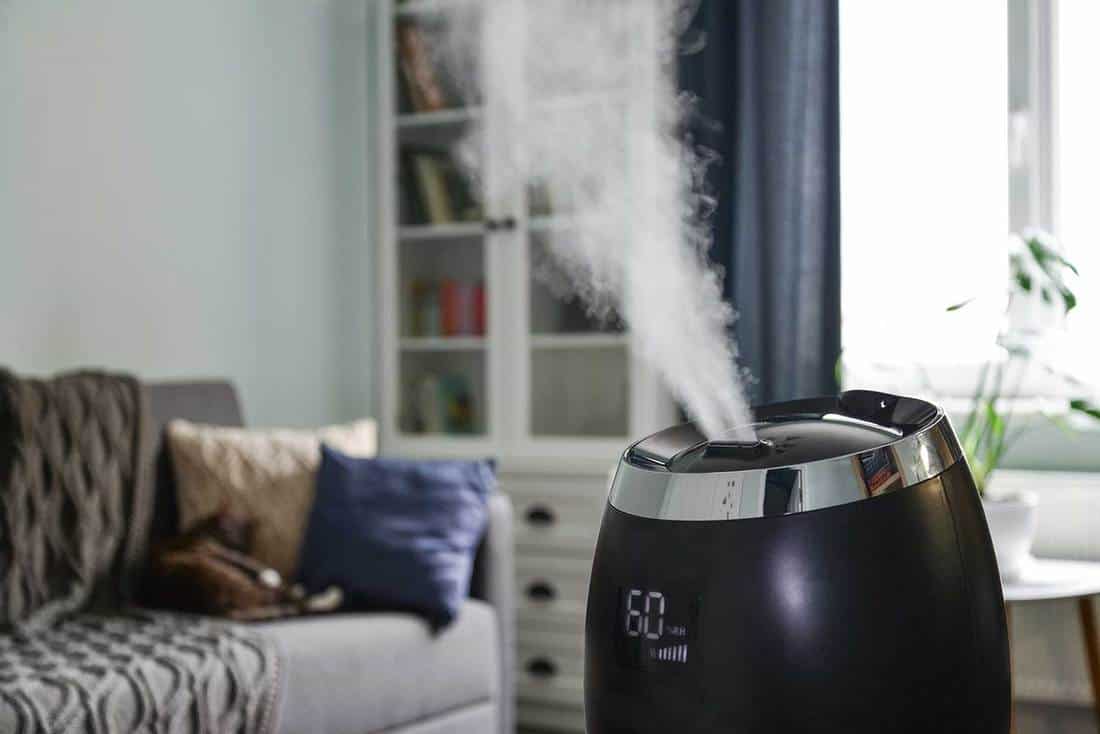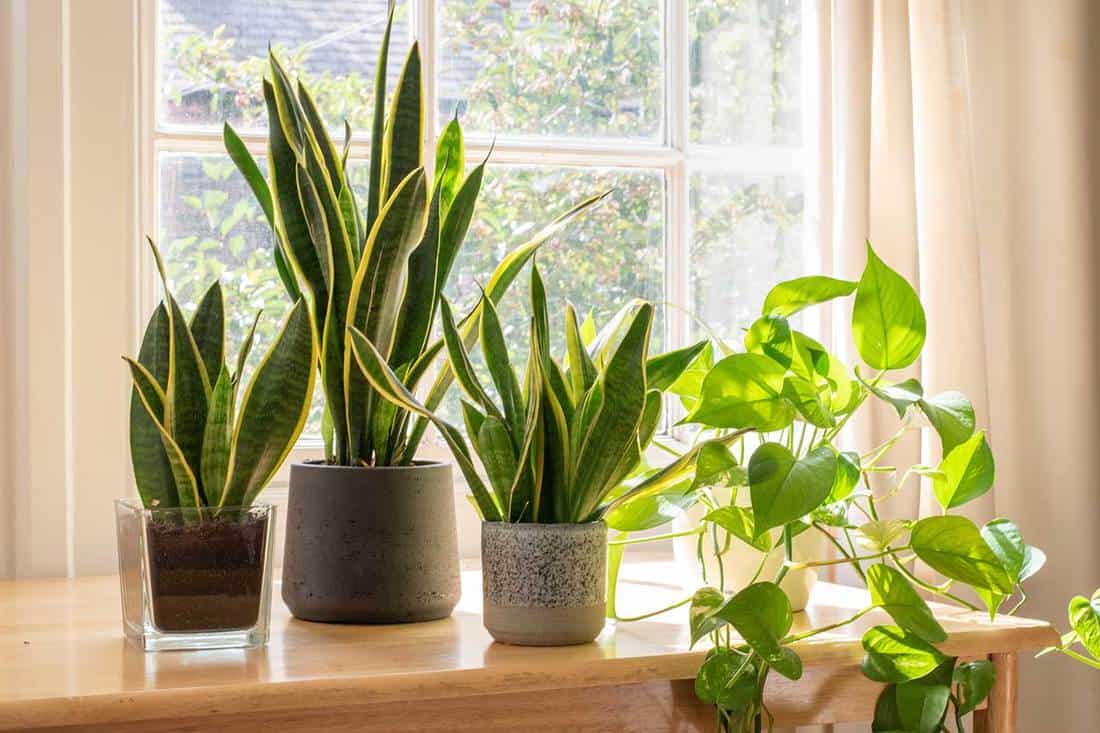We often think of humidity in terms of outside air. But in reality, humidity is a critical consideration when it comes to the air inside our home. But what exactly can one do to increase the humidity in a room? For your convenience, we did the research to bring you the answer.
There are several ways to increase humidity in a room. Some of these methods include:
- Use a humidifier
- Put containers of water in the room, preferably by windows
- Hang clothes to dry
- Steam clothes
- Turn the heat down
- Get houseplants
- Spray the curtains (or other fabric in the room) with water
- Place a damp towel over the air vent
If you still have some additional questions about increasing the humidity in a given room, don't worry. In this guide, we'll explore the topic in greater detail. We'll also tell you how to determine the level of humidity in a room, we'll discuss whether or not dry air can make you sick, and more. Without further ado, let's get into it!
![Ultrasonic cool mist humidifier for home on a small table in living room, How To Increase Humidity In A Room [8 Methods You Should Know]](https://homedecorbliss.com/wp-content/uploads/2021/02/How-To-Increase-Humidity-In-A-Room.png)
Methods Of Increasing Humidity In A Room
We sometimes add affiliate links and content that was curated and created by our team with the help of advanced ai tools to help showcase the best design styles.

Here we'll talk more about the best ways you can increase the humidity in a given room. Before we get into it, it's worth mentioning that the best results can be achieved by using a combination of the following methods.
1. Use A Humidifier
The first (and perhaps most obvious) way to increase the humidity in a room is to use a humidifier. A humidifier is a small device that increases humidity. Simply fill it with water, turn it on, and voila—the air will become more humid.
When it comes to easily increasing the humidity in a room, a simple humidifier will do.
Click here to see this humidifier on Amazon.
2. Put Containers Of Water In The Room, Preferably By Windows
Another simple yet effective way to increase a room's humidity is to put small bowls of water at various places throughout the room, preferably by windows. The water will evaporate, making the air in the room more humid.
Placing these bowls of water by windows will expedite this process, especially on sunny days.
3. Hang Clothes To Dry

Another way to increase a room's humidity is to hang wet clothes in the room. Each time you do a load of laundry, simply pick a few pieces of clothing to hang in the room with dry air, and this will significantly increase the humidity. This is a great way to both increase the longevity of your clothing and the humidity of the surrounding air.
4. Steam Clothes

Whenever you need to get those pesky wrinkles out of your clothing, use a steamer to do so. While irons use steam to some extent, the effect they have on the air's humidity pales in comparison to a conventional steamer.
This handheld cordless steamer will make increasing the humidity a breeze.
Click here to see this handheld garment steamer on Amazon.
5. Turn The Heat Down
Generally speaking, most heaters will dry out the air inside the house. So, unless it's absolutely necessary to have the heat turned up high, consider turning it off (or at least turn it down).
6. Get Houseplants

Adding a few houseplants is another great way to increase the humidity. Without getting too scientific, plants undergo transpiration, a process in which they release moisture into the air. This makes plants a great option for increasing the humidity in a given room.
However, it's worth noting that houseplants generally require a substantial level of humidity to survive and thrive. So, it's important to ensure that the room in question is humid enough to support houseplants.
Thus, incorporating houseplants is a great way to supplement a multifaceted approach to increasing the humidity, but they shouldn't be the sole source of humidity.
A snake plant is an excellent choice, as they are resilient and easy to care for.
Click here to see this snake plant on Amazon.
7. Spray The Curtains (Or Other Fabric In The Room) With Water
Though it might sound silly, periodically spraying the curtains with water is a great way to make the room more humid. The idea is not to completely soak the curtains with water but rather to lightly coat them. As the water evaporates, the surrounding air will become more humid. Doing this two or three times daily is a simple yet effective way to humidify the air.
If the room in question doesn't have curtains, simply spray some water on another fabric surface such as a couch, chair, or bed.
A simple spray bottle is the best way to wet the curtains.
Click here to see this spray bottle on Amazon.
8. Place A Damp Towel Over The Air Vent
And last but certainly not least, a good way to increase a room's humidity is to place a damp towel over the air vent. Naturally, the air coming out of the vent will carry moisture from the towel, increasing the humidity of the surrounding air.
How Do You Know If The Air In Your House Is Dry?
At this point, you might be wondering if there is a way to determine whether or not the air in your house is humid enough. Luckily, there are a few ways to gauge the level of moisture in the air.
Static Electricity
If you notice a buildup of static electricity in your house from being frequently zapped, this is an indicator that the air lacks moisture.
Dry Throat, Cracked Skin, And Nosebleeds
If you frequently wake up with a dry throat and/or nosebleeds, there's a good chance that the air in your house is too dry. In addition, dry, cracked skin is another indicator that the surrounding air lacks humidity.
Ice Cube Test
There is a simple test you can perform to gauge the humidity level of the air in your house.
Fill a glass with ice and water. After a few minutes, if no moisture (condensation) has formed on the outside of the glass, this indicates that the air is relatively dry.
If moisture does form on the outside of the glass, this is an indication that the air is relatively humid.
Peeling Wallpaper
If you've noticed that the wallpaper in your home has started to peel, this is a surefire indication that the air in your house is too dry.
Humidity Gauge
There is also a more scientific, concrete way to determine the level of humidity in your house, and that is with a humidity gauge. A simple humidity gauge can measure the level of humidity and indicate whether the inside air is too wet, too dry, or just right.
This humidity gauge will allow you to accurately track the humidity level in your home.
Click here to see this humidity gauge on Amazon.
Why Is The Air In My House So Dry?
The leading cause of dry inside air is cold weather outside. Simply put, cold air isn't able to retain as much moisture as warmer air. If there are cracks or gaps around the doors and windows of your house, this cold air can make its way inside and dry out the air.
And when cold air gets in, the natural response is to turn the heat up. But as we mentioned earlier, heating your house can also dry out their air even more.
Can Dry Air Make You Sick?
Dry air can indeed make you sick. Breathing in dry air can lead to a myriad of respiratory ailments.
We'll briefly discuss how this happens without getting too scientific. Simply put, our lungs are lined with a protective layer of moist membranes. When we breathe in dry air, these membranes dry out and become less effective, making us more susceptible to all kinds of respiratory ailments.
Furthermore, breathing in dry air can lead to dehydration, as water is already being lost during respiration.
How Long Does It Take To Humidify A Room?

How long it takes to humidify a room will depend on a number of factors such as the starting humidity level, the size of the room, and the output of the source of humidity (such as a humidifier).
But generally speaking, you can expect it to take several hours to significantly raise the level of humidity in a room using a combination of the methods discussed earlier.
Can You Over Humidify A Room?
While humid air is certainly a good thing, it is indeed possible to over humidify a room. If a room becomes too humid, moisture can start to accumulate near the source of humidity, and this can cause mold growth and other issues.
In Closing
We hope this guide has served as a comprehensive guide for interior air humidity. Increasing the level of humidity in your home is one of the best things you can do for your comfort and health. Before you go, be sure to take a look at these other guides that might be of interest:





